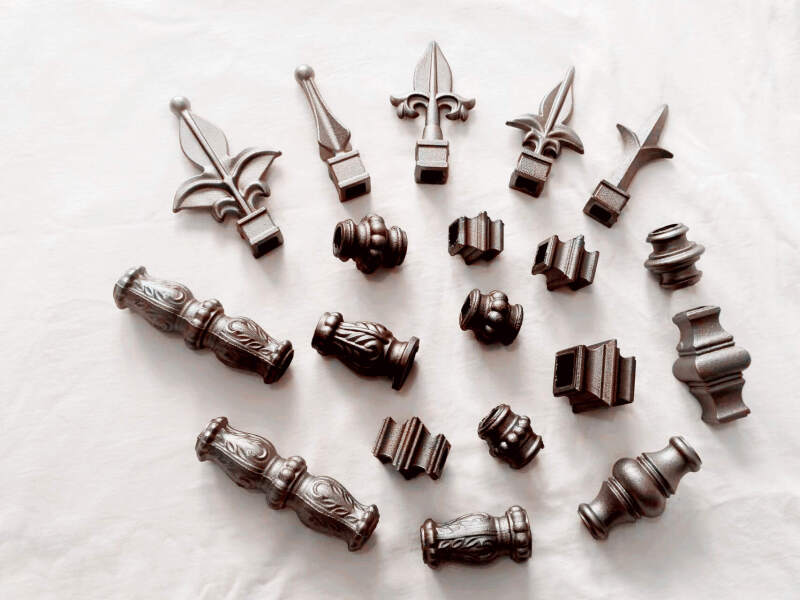
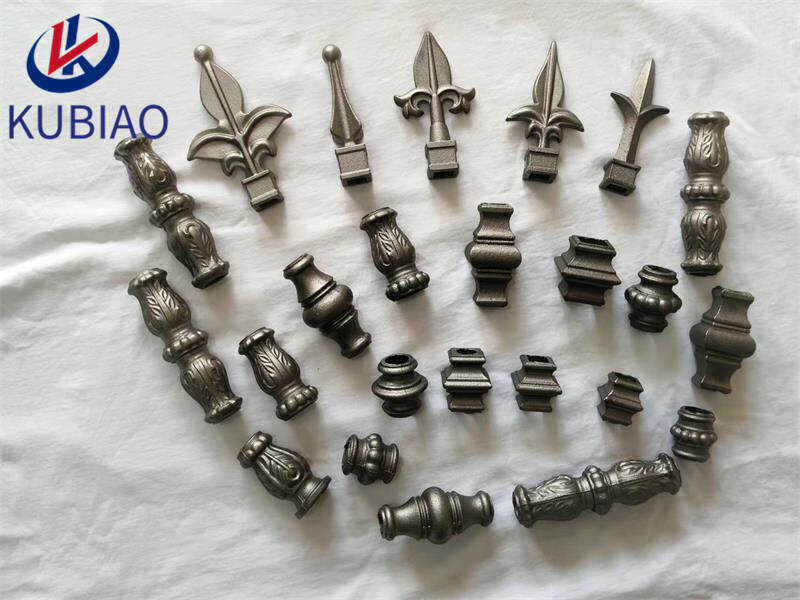
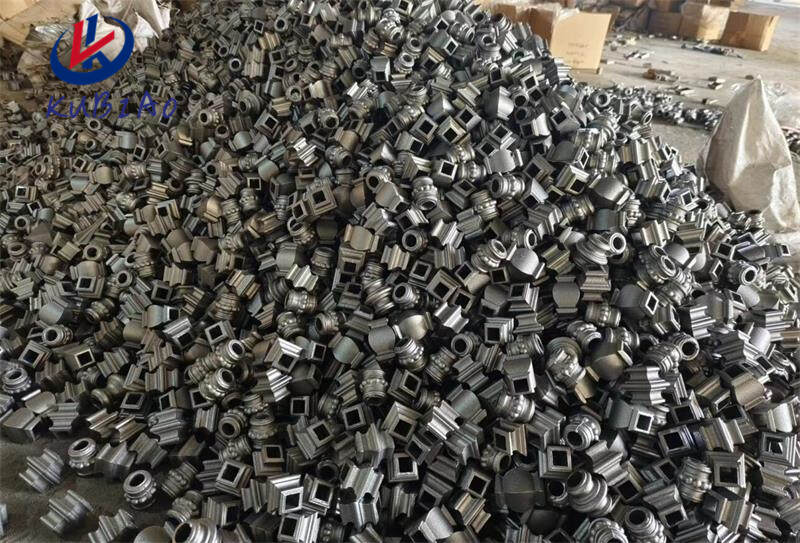
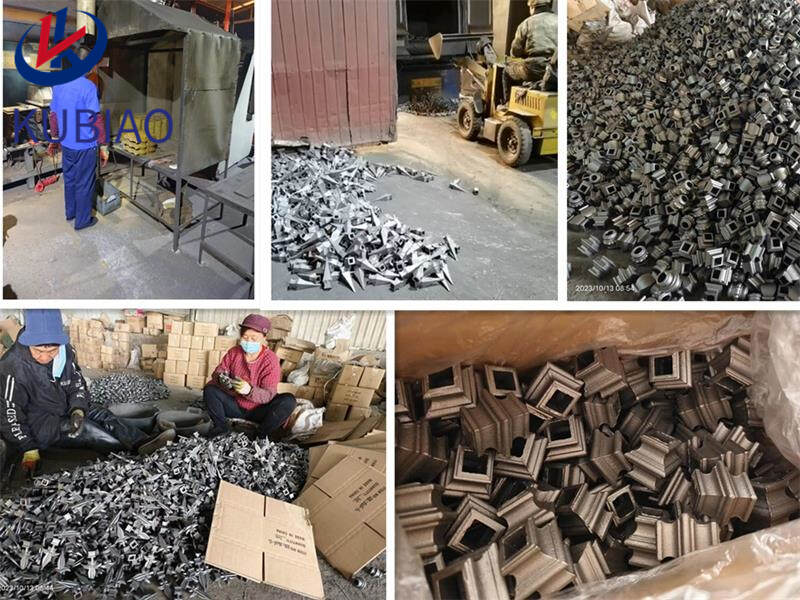
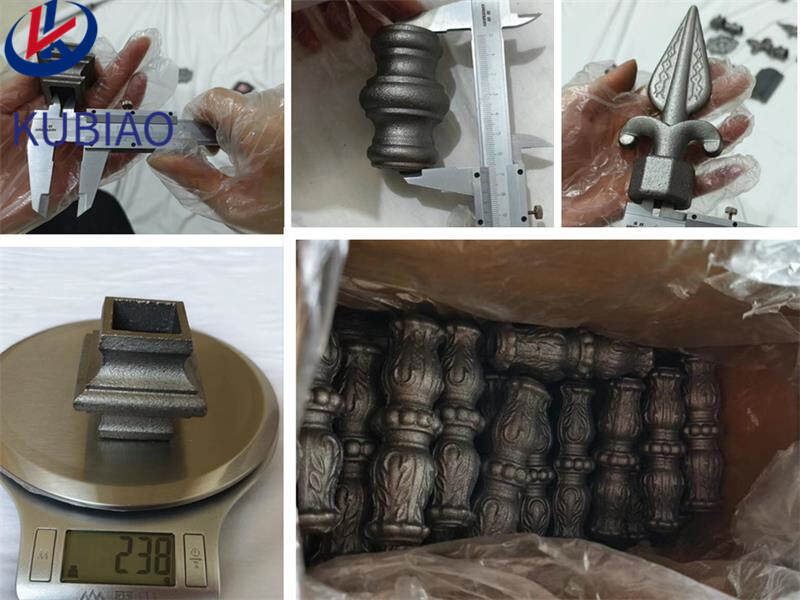
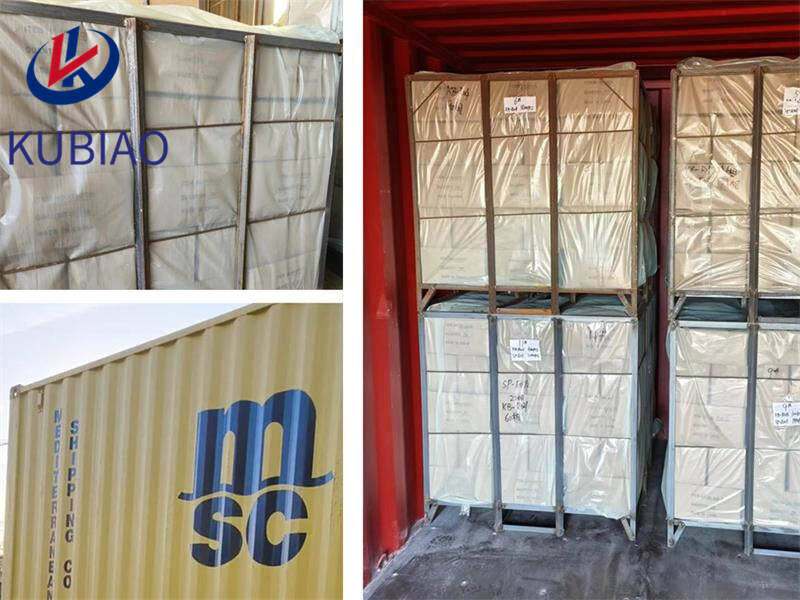
| Product name | iron art decor |
| Keyword | decorative rosette ,fence decorative stud,customized casting ,iron fence cap,cast iron spear |
| Place of Origin | China |
| Quality standard | We have our own professional QC team to insure the quality. |
| Feature | Cast iron is a strong metal material that can withstand large amounts of pressure and weight. It is also durable and resistant to corrosion, making it ideal as a decorative item |
| Application scope | Supermarket, etc. |
| surface treatment | sand blasting antirust antirust oil/water painting hot dip galvanizing |
| Unit Weight(g) | 451(Contact us for specific information to confirm) |
| terms of payment | 50% T/T in advance, balance before shipment. |
| Life span | 19 years (Contact us for specific information to confirm) |
| delivery time | It usually takes 40 days. |
| Advantage | We keep good quality and competitive price to ensure our customers benefit |
| Packing | 15x8.92x15.4cm(Contact us for specific information to confirm) |
| OEM/ODM | Customization Service Provided |
| design | beautiful elegance sleek pretty |
| Sales country | All over the world for example:Ecuador,Turkey,Netherlands Antilles,Mali,Romania,Seychelles,Bhutan,Nicaragua |
| MOQ | 204pcs(Contact us for specific information to confirm) |
1.Are there any common design elements found in iron art decor ?
1. Intricate Details: Cast iron ornaments often feature intricate and detailed designs, such as floral patterns, scrollwork, and geometric shapes.
2. Curved and Organic Shapes: Many cast iron ornaments have curved and organic shapes, which are achieved through the casting process.
3. Symmetry: Symmetry is a common design element in cast iron ornaments, with designs often being mirrored on both sides.
4. Repetition: Many cast iron ornaments feature repeated patterns or motifs, creating a sense of unity and cohesion in the design.
5. Textures: Cast iron ornaments can have a variety of textures, including smooth, rough, and hammered surfaces, adding visual interest and depth to the design.
6. Finials and Fleur-de-lis: Finials, which are decorative end pieces, and fleur-de-lis, a stylized lily flower, are commonly found in cast iron ornaments, adding a touch of elegance and sophistication.
7. Gothic and Victorian Influences: Cast iron ornaments often draw inspiration from Gothic and Victorian architecture, featuring pointed arches, spires, and intricate details.
8. Natural Elements: Many cast iron ornaments incorporate natural elements, such as leaves, flowers, and animals, into their designs.
9. Rustic and Industrial Aesthetics: Cast iron ornaments can also have a rustic or industrial aesthetic, with rough textures and simple, geometric designs.
10. Black or Dark Colors: Due to the nature of cast iron, most ornaments are black or dark in color, adding a sense of drama and contrast to the design.
2.Are iron art decor easy to install?
We should have a stable supply chain and logistics capabilities, and provide customers with high -quality, low -priced iron art decor products. It depends on the specific ornament and the installation method. Some cast iron ornaments may be easy to install with simple screws or brackets, while others may require more complex installation techniques such as drilling or welding. It is important to carefully read the installation instructions and have the necessary tools and skills before attempting to install a cast iron ornament.
3.Can I customize my own iron art decor ?
We are centered on customers and always pay attention to customers' needs for iron art decor products.
Yes, you can customize your own cast iron ornaments by using a variety of techniques such as painting, engraving, or adding embellishments. You can also create your own design or use a pre-made template to personalize the ornament. Additionally, you can choose the shape, size, and finish of the ornament to make it unique to your preferences.
4.What are iron art decor ?
We have flexible production capacity. Whether you are large orders or small orders, you can produce and release goods in a timely manner to meet customer needs.
Cast iron ornaments are decorative objects made from cast iron, a type of iron that is heated until it becomes molten and then poured into a mold to create a specific shape. These ornaments can range from small figurines and sculptures to larger architectural elements such as columns, balusters, and finials. They are often used to add a touch of elegance and charm to gardens, homes, and other outdoor spaces. Cast iron ornaments are known for their durability and can withstand harsh weather conditions, making them a popular choice for outdoor decor. They can also be painted or finished in various colors and styles to suit different design preferences.
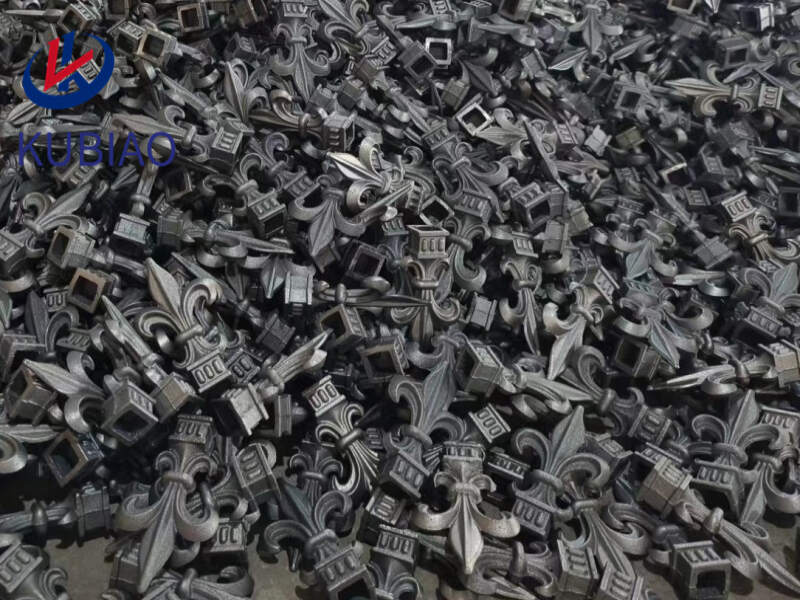
5.Are iron art decor heavy?
We have rich industry experience and professional knowledge, and have strong competitiveness in the market.
Yes, cast iron ornaments are typically heavy due to the density and weight of the material. They can range in weight from a few pounds to several hundred pounds, depending on the size and design of the ornament.
6.What types of designs can be found on iron art decor ?
As one of the iron art decor market leaders, we are known for innovation and reliability.
1. Floral designs: These can include intricate patterns of flowers, leaves, and vines.
2. Animal designs: Cast iron ornaments can feature various animals such as birds, butterflies, horses, and more.
3. Geometric designs: These can range from simple geometric shapes to more complex patterns and designs.
4. Architectural designs: Cast iron ornaments can also feature architectural elements such as columns, arches, and pillars.
5. Religious designs: Some cast iron ornaments may have religious symbols or figures, such as crosses or angels.
6. Nautical designs: These can include anchors, ships, lighthouses, and other maritime elements.
7. Mythological designs: Cast iron ornaments may also feature mythical creatures such as dragons, unicorns, or mermaids.
8. Traditional designs: These can include classic designs such as fleur-de-lis, scrolls, and medallions.
9. Seasonal designs: Some cast iron ornaments may have designs related to specific seasons, such as snowflakes for winter or flowers for spring.
10. Custom designs: Many cast iron ornaments can be custom-made with personalized designs, such as family names or monograms.
7.How are iron art decor used in home decor?
We have advanced production equipment and technology to meet the needs of customers, and can provide customers with high quality, low priced iron art decor products.
1. Wall Decor: Cast iron ornaments can be used as wall decor by hanging them on the wall using hooks or nails. They can add a vintage and rustic touch to any room.
2. Bookends: Cast iron ornaments in the shape of animals, plants, or other objects can be used as bookends to keep books in place on a shelf or table.
3. Doorstops: Heavy and sturdy cast iron ornaments can be used as doorstops to hold doors open. They can also add a decorative element to the room.
4. Garden Decor: Cast iron ornaments can be used in the garden as decorative pieces. They can be placed on a garden wall, hung from a tree, or used as a centerpiece in a flower bed.
5. Fireplace Accessories: Cast iron ornaments such as fire grates, firebacks, and fireplace tools can add a traditional and elegant touch to a fireplace.
6. Table Centerpieces: Small cast iron ornaments can be used as table centerpieces. They can be placed on a tray or in a bowl with other decorative items to create a unique and eye-catching display.
7. Kitchen Decor: Cast iron ornaments in the shape of fruits, vegetables, or kitchen utensils can be used as decorative pieces in the kitchen. They can be displayed on a shelf or hung on the wall.
8. Candle Holders: Cast iron ornaments can be used as candle holders by placing a candle on top or inside them. They can add a touch of warmth and coziness to any room.
9. Coat Hooks: Cast iron ornaments in the shape of hooks can be used as coat hooks in an entryway or mudroom. They can add a functional and decorative element to the space.
10. Furniture Accents: Cast iron ornaments can be used as accents on furniture pieces such as tables, chairs, and cabinets. They can add a unique and personalized touch to the furniture.
8.What are the origins of cast iron ornament production?
We focus on teamwork and communication to achieve common goals, We attach great importance to this detail.
The production of cast iron ornaments can be traced back to the 18th century in Europe, particularly in England and France. During this time, cast iron was becoming a popular material for architectural and decorative elements due to its strength, durability, and ability to be molded into intricate designs.
The Industrial Revolution in the 19th century further fueled the production of cast iron ornaments, as advancements in technology and manufacturing processes made it easier and more cost-effective to produce these decorative pieces. Cast iron ornaments were used extensively in the construction of buildings, bridges, and other structures, as well as in furniture and household items.
The popularity of cast iron ornaments continued to grow throughout the 19th and early 20th centuries, with the rise of the Victorian era and its emphasis on ornate and elaborate designs. However, the production of cast iron ornaments declined in the mid-20th century with the introduction of new materials and construction methods.
Today, cast iron ornaments are still produced and used in various architectural and decorative applications, but they are often considered a symbol of the past and are highly valued for their historical and aesthetic significance.
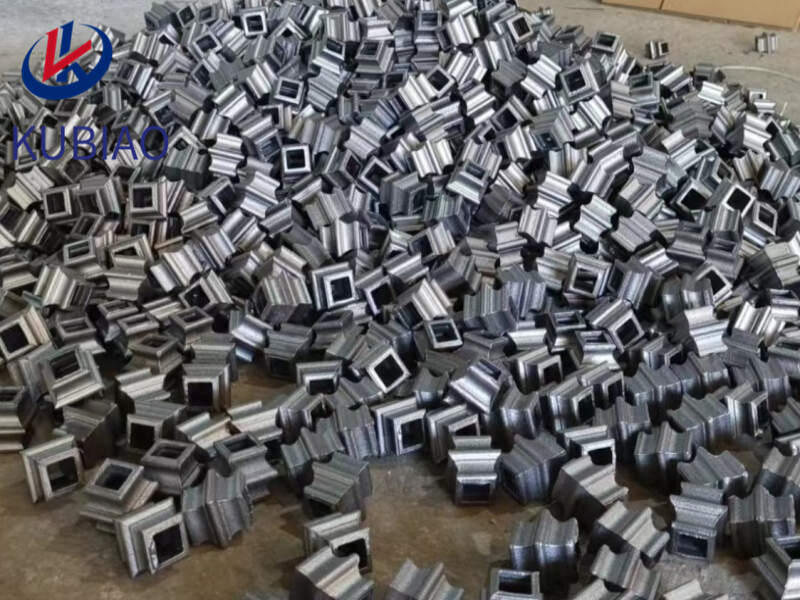
9.Are there any eco-friendly options for iron art decor ?
We are committed to providing personalized solutions and established long -term strategic cooperative relationships with customers.
Yes, there are several eco-friendly options for cast iron ornaments:
1. Recycled Cast Iron: Look for cast iron ornaments that are made from recycled materials. This reduces the need for new resources and helps to minimize waste.
2. Sustainable Production: Some companies use sustainable production methods, such as using renewable energy sources and minimizing water usage, to create their cast iron ornaments.
3. Organic Coatings: Instead of traditional paint or varnish, some cast iron ornaments are coated with organic materials, such as linseed oil or beeswax, which are more environmentally friendly.
4. Fair Trade: Look for cast iron ornaments that are certified as fair trade, meaning they are produced in an ethical and sustainable manner, and workers are paid fair wages.
5. Vintage or Secondhand: Consider purchasing vintage or secondhand cast iron ornaments instead of new ones. This reduces the demand for new production and gives new life to old items.
6. DIY: If you have some basic metalworking skills, you can create your own cast iron ornaments using recycled materials or scrap metal.
7. Upcycled: Some companies specialize in upcycling old cast iron items, such as old radiators or pipes, into unique and eco-friendly ornaments.
8. Biodegradable Packaging: When purchasing cast iron ornaments, look for companies that use biodegradable or recyclable packaging materials to reduce waste.
9. Local Production: Choosing cast iron ornaments that are locally produced reduces the carbon footprint associated with transportation and supports your local economy.
10. Longevity: Cast iron ornaments are known for their durability and longevity. By choosing high-quality, long-lasting ornaments, you can reduce the need for frequent replacements and ultimately reduce waste.
10.What colors can iron art decor come in?
As one of the top iron art decor manufacturers in China, we take this very seriously.
Cast iron ornaments can come in a variety of colors, including:
1. Black: This is the most common color for cast iron ornaments, as it is the natural color of the material.
2. Bronze: Cast iron can be treated with a bronze finish to give it a warm, metallic look.
3. White: Some cast iron ornaments may be painted white for a more modern or shabby chic look.
4. Rust: Over time, cast iron can develop a rust patina, giving it a unique and aged appearance.
5. Green: Some cast iron ornaments may be painted green for a vintage or antique look.
6. Gold: Cast iron can be treated with a gold finish for a luxurious and elegant look.
7. Silver: Similar to gold, cast iron can also be treated with a silver finish for a more modern and sleek appearance.
8. Blue: Some cast iron ornaments may be painted blue for a pop of color and a whimsical touch.
9. Red: Red is another popular color for cast iron ornaments, especially during the holiday season.
10. Custom colors: Cast iron ornaments can also be painted or coated in any custom color to match a specific theme or decor.
11.How long do iron art decor typically last?
We attach importance to the innovation ability and team spirit of employees, have advanced R & D facilities and laboratories, and have a good quality management system.
Cast iron ornaments can last for decades or even centuries if they are properly cared for and maintained. However, their lifespan can vary depending on factors such as exposure to harsh weather conditions, regular cleaning and maintenance, and the quality of the cast iron itself. With proper care, cast iron ornaments can last for generations.
12.How have iron art decor evolved over time?
We focus on innovation and continuous improvement to maintain a competitive advantage.
Cast iron ornaments have evolved significantly over time, both in terms of their design and production methods. Here are some key changes that have occurred:
1. Early designs: The earliest cast iron ornaments were simple and functional, such as door knockers, hinges, and fireplace tools. These were often made using sand casting techniques and had a utilitarian look.
2. Victorian era: In the mid-19th century, cast iron ornaments became more decorative and ornate, reflecting the Victorian love for intricate designs and embellishments. This era saw the rise of cast iron garden furniture, fountains, and statues, often featuring elaborate floral and animal motifs.
3. Industrial revolution: With the advent of the industrial revolution, cast iron ornaments became more affordable and accessible to the middle class. This led to a proliferation of cast iron products, including street lamps, railings, and building facades.
4. Art Nouveau and Art Deco: In the late 19th and early 20th centuries, cast iron ornaments were influenced by the Art Nouveau and Art Deco movements, which favored more fluid and geometric designs respectively. This led to the creation of cast iron gates, grilles, and other architectural elements with intricate patterns and motifs.
5. Modern era: In the 20th century, cast iron ornaments continued to evolve, with a focus on functionality and minimalism. Modern designs often feature clean lines and geometric shapes, and are used in a variety of applications, from furniture to home decor.
6. Production methods: While sand casting was the primary method of producing cast iron ornaments in the past, modern techniques such as die casting and investment casting have made the process more efficient and precise. This has allowed for the creation of more intricate and detailed designs.
7. Materials: While cast iron was the preferred material for ornaments in the past, modern advancements have led to the use of other materials such as aluminum and bronze. These materials offer greater strength and durability, while still retaining the look and feel of cast iron.
Overall, cast iron ornaments have evolved from simple and functional objects to highly decorative and versatile pieces, reflecting the changing tastes and advancements in technology over time.
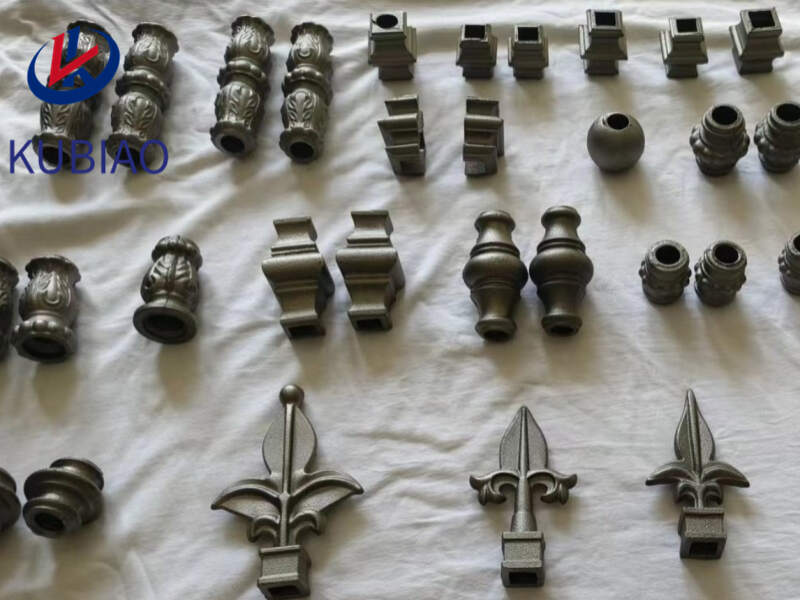
13.Are there any health hazards associated with iron art decor ?
We focus on our customers' needs and strive to meet their expectations, so we take this very seriously.
There are no known health hazards associated with cast iron ornaments. However, if the ornaments are painted or coated with a sealant, there may be potential health risks from the chemicals used in these products. It is important to follow proper safety precautions when handling and using any type of paint or sealant. Additionally, if the ornaments are rusty or corroded, there may be a risk of tetanus if someone were to get cut or punctured by the metal. It is always a good idea to wear gloves and handle rusty or sharp objects with caution.
14.What are the cost differences between iron art decor and other types of decorations?
I have a comprehensive after -sales service system, which can pay attention to market trends in time and adjust our strategy in a timely manner.
The cost differences between cast iron ornaments and other types of decorations can vary depending on the specific item and where it is purchased. Generally, cast iron ornaments tend to be more expensive than other types of decorations such as plastic or resin ornaments. This is because cast iron is a more durable and high-quality material that requires more labor and resources to produce. Additionally, cast iron ornaments often have intricate designs and details that add to their cost. On the other hand, plastic or resin ornaments are typically mass-produced and can be made at a lower cost, resulting in a lower price point. Ultimately, the cost differences between cast iron ornaments and other types of decorations will depend on the specific product and its features.
Welcome to contact us for Cast Iron Order!
Email: sales@kubiaometal.com
Cellphone/Whatsapp: 0086 13020588163
Wechat: 13028588163
Tag:cast iron fence caps,ornamental cast iron ,cast iron fence cap,gate collar ,fence decorative stud
PREV: iron cap
NEXT: gate ornaments
Product
Category